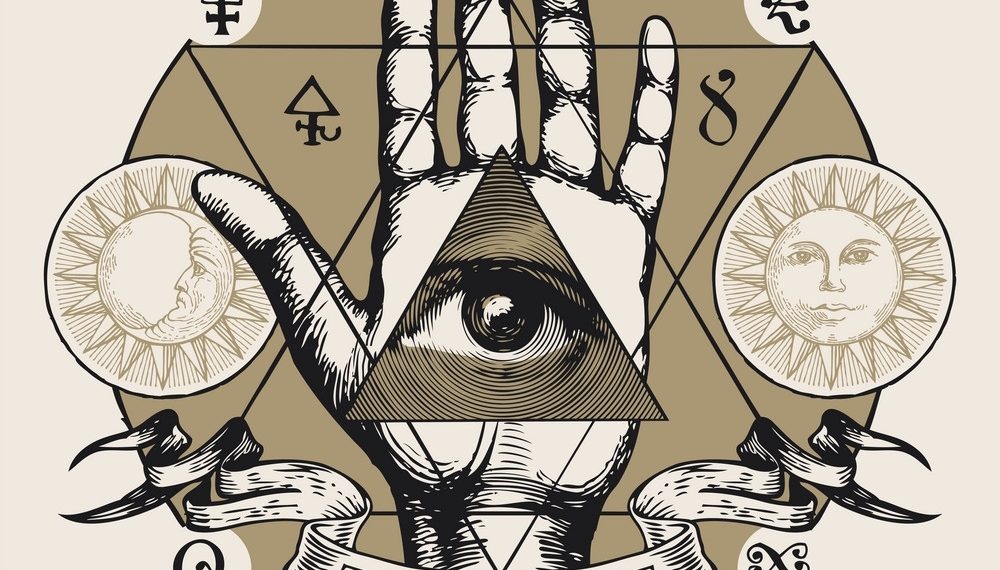As was mentioned in the post about Biblical References to Satan, The Bible does not elaborate much on Hell; only that it is a “lake of fire” to which Lucifer was sent after he and one-third of God’s angels rebelled as punishment for his hubris. The structure of Hell, and the idea of sinners’ eternal punishment being ironically tailored to suit their sin, comes largely from Dante Alighieri’s Inferno.
Inferno was the first part of a trilogy entitled the Divine Comedy. The story begins on Good Friday in the year 1300; Dante is thirty-five years old, half of the biblical life expectancy of 70 (Psalms 89:10), and lost in a dark woods, where he is beset by beasts. He meets the spirit Virgil, who was sent to him by his lover Beatrice in Heaven. Virgil assures Dante he can lead him to Beatrice, but to do so he must pass through Hell, then Purgatory, before reaching Heaven. Inferno follows his trek through Hell; Purgatorio, the second book, follows him through Purgatory; and in Paradiso, Dante reunites with Beatrice, who leads him through the Nine Spheres of Heaven.
Dante and Virgil at the Gate of Hell: “Abandon all hope, ye who enter here”
Francesca and Paolo in the 2nd Layer of Hell
Dante and Virgil in the Third Bolgea in the 8th Layer of Hell
Thieves beset by serpents in the Seventh Bolgea in the 8th Layer of Hell
Dante and Virgil in the frozen lake of Cocytus
The Divine Comedy was a vehicle for the author Dante to articulate his dissent to certain politicians, who he relegated to eternal torture in Hell (even while they were alive and very much acquainted at the time of writing), and to advertise his self-appointed greatness compared to the greatest poets of the time, including the Roman poet Virgil. It was also an allegory representing the character Dante’s mental journey to understand God’s love; first through understanding Sin in Hell, then through understanding how sin corrupts God’s love in Purgatory, then by finally understanding his love in Heaven. It is a decidedly Christian piece; the primary moral theme being that not only is sin evil, but one ought not pity sinners.
A diagram of the structure of Hell in Dante’s Inferno, drawn by Barry Moser
The Structure of Hell
Dante’s Hell is shaped like a funnel that extends all the way to the center of the earth. It is situated underneath the city of Jerusalem, which is at the center of the northern hemisphere. Opposite Jerusalem, at the center of the southern hemisphere is the mountain of Purgatory. Lucifer is immobilized at the bottom of Hell, where he fell after the defeat in his rebellion against God.
This funnel is made of nine circles. The first circle is the widest and, progressively, the ninth circle is the smallest. This ninth circle surrounds Lucifer. Each circle is reserved to a different category of sinners:
Ante-Hell: This is a place where the souls of the damned fall at their death. From here they are brought by Charon into Hell through the river Acheron. Some souls, the Neutrals, remain here, because they never chose either good or evil.
Upper Hell: the Incontinent
1st circle: Limbo. Reserved for the souls of the just people who never knew Christ, and those (especially infants) who died without baptism and never committed a sin. Here Dante encounters the ancient philosophers and poets.
2nd circle: The Lustful. Dante talks to Francesca da Rimini, who tells him how she became involved in an adulterous affair with Paolo, her brother in law. Landscape: a violent storm which tosses around the souls. Minos guards this circle.
3rd circle: The Gluttonous. Dante talks to Ciacco, a Florentine, who used to be a parasite, as he was going from people to people, gossiping on everyone. Ciacco gives Dante the first prophecy of his future exile. Landscape: heavy steady rain. Three-headed Cerberus is the guardian.
4th circle: The Avaricious and Prodigals. No relevant character is found here. These souls, mostly clerics, go opposite direction, bumping into each other as they push big rocks. The guardian is Pluto, who makes no sense when he talks.
5th circle: The Wrathful and Sullen. These souls are submerged into the river Styx, which surrounds the city of Dis. The wrathful emerge from the dirty waters while the sullen are completely submerged. Phlegyas will take Dante and Virgil across this river in his boat. Here Dante talks to Filippo Argenti, an old acquaintance for whom he has no pity.
Lower Hell: Violence and Fraud
The city of Dis: High walls with closed doors guarded by devils, helped by the Furies and the Medusa. They try to stop Dante, but a divine messenger forces them to open the door.
6th circle: The Heretics. Dante enters the city and sees a huge cemetery filled with open tombs with fire coming out of them. One of the tombs contains the souls of the Epicureans. Dante talks to Farinata degli Uberti and Cavalcante de’ Cavalcanti, father of Guido, the poet, and Dante’s friend.
7th circle: The Violent. Introduced by the Minotaur, this circle is divided into three rings:
1) Violent Against their Neighbors (tyrants and murderers). These souls are plunged into a river of boiling blood: the river Phlegethon. They are watched over by the Centaurs.
2) Violent against Themselves (suicides). It is an unnatural forest with leafless trees. These trees are the souls of the suicides. Dante talks to Pier delle Vigne, personal secretary of Frederick II. The trees have no leaves because the Harpies keep plucking them as they sprout. Among the trees Dante sees the souls of the squanderers, chased by bitches.
3) Violent against God and Nature. Blasphemers, Sodomites, etc. Virgil talks to Capaneus, king of ancient Crete, stricken by Zeus’s bolt for his rebellion. Then Dante talks to his teacher Brunetto Latini, and later he sees three Florentines, at the edge of the circle.
The river Phlegethon cascades into the eight circle, and there is no path to go down. Dante and Virgil are carried down by a three-nature monster, Geryon.
8th circle: Fraud. It is called Malebolge because it is divided into ten bolge (ditches).
1) Panders and Seducers. These souls are scourged by horned demons. Dante talks to Venedico Caccianemico.
2) Flatterers. These souls are immersed in excrements. Dante talks to Alessio Interminei and the ancient Thais.
3) Simonists. They are set heads down into holes in the rock with flames burning on their feet. Dante talks to Pope Nicholas III, who mistakes him for Boniface VII.
4) Diviners, Astrologers and Magicians. Their heads are turned backwards, so they have to walk backwards. Virgil talks to some ancient people: Amphiaraus, Tiresias, Manto and Eurypylus. Among the modern: Michael Scot.
5) Barrators. They are plunged into boiling pitch and guarded by ten sneaky demons (Malebranche) led by Malacoda (evil tail). Ciampolo of Navarra (a sinner) succeeds in cheating the demons in a hellish context.
6) Hypocrites. These souls, mostly monks of the Jovial order, walk slowly, clothed in heavy caps of lead. Dante talks to two of them from Bologna.
7) Thieves. These souls keep changing into snakes. Dante recognizes (among others) Vanni Fucci, who predicts the defeat of Dante’s party, the Whites, and his exile from the city.
8) Fraudulent Counselors. These souls slide away in the ditch as flames. First Virgil talks to Ulysses, the Homeric hero, then Dante talks to Guido da Montefeltro, a turned saint sneaky character.
9) Sowers of Discord and Schism. These souls are physically torn apart. Dante talks to a few, among them Bertram de Bornio, who holds his severed head like a lamp as he walks along.
10) Falsifiers of metals, persons, coins and words. It is like a huge hospital with people with all kinds of deformities. As in the previous ditch, this too is crowded. Master Adam is the most colorful of them.
9th circle: Treachery. It is divided into four sections. The sinners are in a frozen lake, Cocytus. This circle is surrounded by the Giants. One of them, Antaeus, takes Dante and Virgil and puts them down into the ice.
1) Caina: Traitors to Kin. These are immersed in the ice with head down. Dante talks to Carmiscione de’ Pazzi.
2) Antenora: Traitors to Homeland. Dante sees one who keeps biting on another’s head. He is Count Ugolino who is gnawing the Archbishop Ruggeri’s head. He tells Dante the account of his death.
3) Ptolomea: Traitors to Guests. They are head up in the ice, which is freezing their eyes. Dante talks to Fra Alberigo, who is there while his body is still alive, for having killed his guests as he invited them for dinner.
4) Giudecca: Traitors to Benefactors. These sinners are completely immersed into the ice.
The ice of the 9th circled is kept frozen by Lucifer’s six flapping wings. Lucifer has three faces, with three mouths, each chewing on a sinner: Judas is in the middle mouth with his head inside, Brutus and Cassius are in the side mouths, with their heads hanging out.
Accredited to Italian Studies at Stony Brook; taken from this website.







